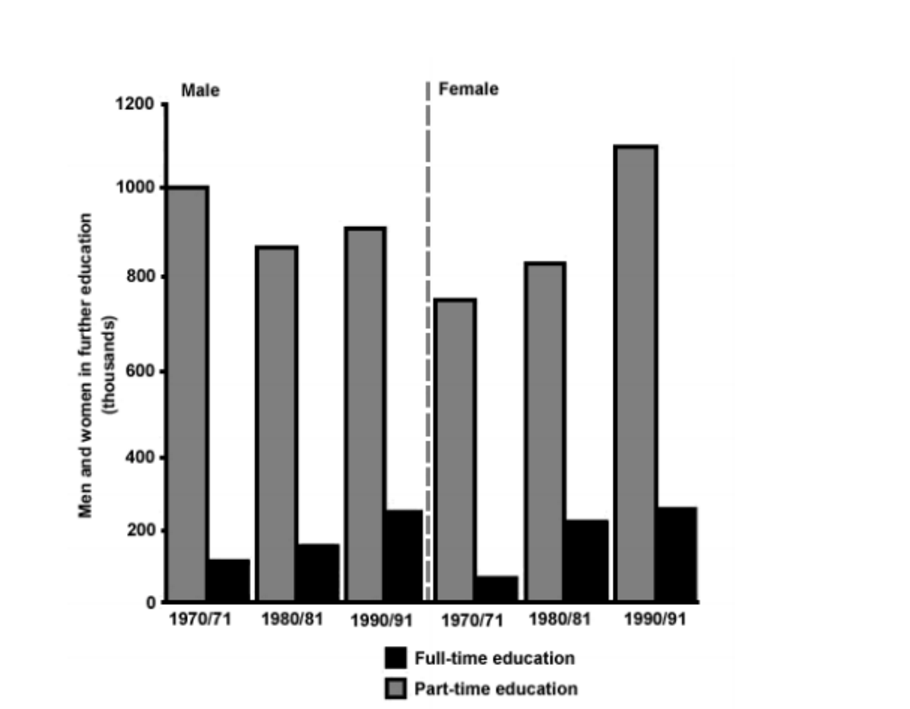ChingTang
Dec 1, 2016
Writing Feedback / Who was more eager to get an advanced education? Men, women and after full or part-time education? [2]
The bar chart illustrates the numbers of people who got an advanced education between men and women with comparing full-time education and part-time education from 1970 to 1991.
It was clearly different between the numbers of full-time education and part-time education. There is an incredible difference that people got much more further part-time learning than full-time learning. On the other hand, the chart tells us the numbers of men in part-time education decrease compared to 1970 to 1991; whereas the numbers of women increased year by year. However, there was a same situation between males and females in full-time education- the number of education rose apparently in the period, especially in females.
According to the bar chart, we are informed men who had further part-time studying were more than women in 1970/71, 1000 thousands and about 750 thousands individually. Nevertheless, the situation reversed in 1990/91. The biggest difference is in the part-time schooling, that approximately 900 thousands of males had, compared with 1100 thousands of females did.
The bar chart illustrates the numbers of people who got an advanced education between men and women with comparing full-time education and part-time education from 1970 to 1991.
It was clearly different between the numbers of full-time education and part-time education. There is an incredible difference that people got much more further part-time learning than full-time learning. On the other hand, the chart tells us the numbers of men in part-time education decrease compared to 1970 to 1991; whereas the numbers of women increased year by year. However, there was a same situation between males and females in full-time education- the number of education rose apparently in the period, especially in females.
According to the bar chart, we are informed men who had further part-time studying were more than women in 1970/71, 1000 thousands and about 750 thousands individually. Nevertheless, the situation reversed in 1990/91. The biggest difference is in the part-time schooling, that approximately 900 thousands of males had, compared with 1100 thousands of females did.

.png
